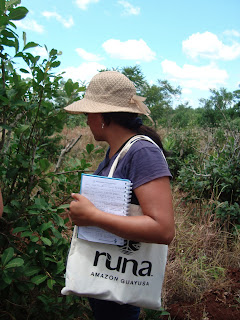As some of you may know, in October Xavi and I moved into our next door neighbor's big house because they moved to Costa Rica. The house is AMAZING. It has a pool, 3 full bathrooms, 3 bedrooms, an office, big kitchen, living room and dining area. It is fully furnished and is a peaceful and beautiful place to live.
We got a great deal on the house but part of the deal is that we take care of they owner's pets until he can move some of them to Costa Rica or find homes in Tena for them. This isn't just a dog or a couple of cats... He has 4 dogs, 5 cats, 30 birds and a pond full of fish! We also have a dog named Charlie, so he has become part of the pack.
I thought it would be fun to introduce them to you!
This is Sacha
This is Patty
This is Pepa
This is our dog, Charlie
These are the kitties
This is the bird cage and the birds below
The other dog, Anibal, refused to be photographed today, but he is also very cute (although grumpy).
Every morning at around 6:15 we wake up to feed all of the animals, and then in the evening around 6:00 we feed them again. We take Charlie, Patty and Anibal for a long walk or run almost everyday and recently Sacha started joining us as well, which is good because she is very fat! It is fun taking care of them, they all have different personalities and they keep me company when Xavi is traveling for work.
Hope everyone is doing well!
Love,
Aliana
.jpg)
.jpg)
.jpg)





.jpg)

































.JPG)













